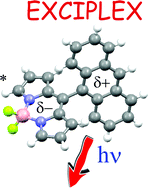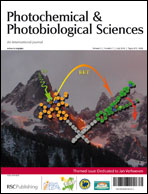Exciplex-like emission from a closely-spaced, orthogonally-sited anthracenyl-boron dipyrromethene (Bodipy) molecular dyad†‡
Abstract
A molecular dyad, ANTBD, has been prepared that incorporates a

- This article is part of the themed collection: In honour of Jan Verhoeven

 Please wait while we load your content...
Please wait while we load your content...